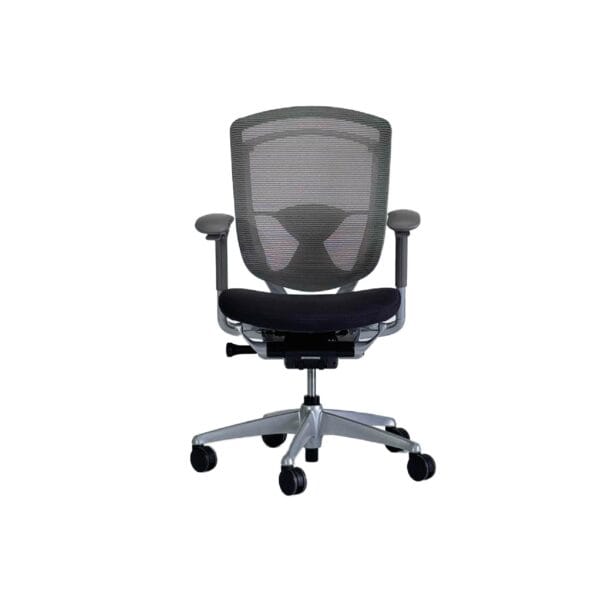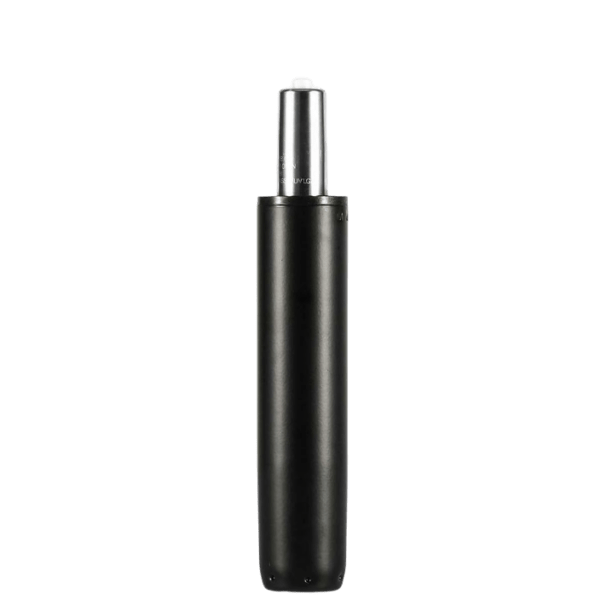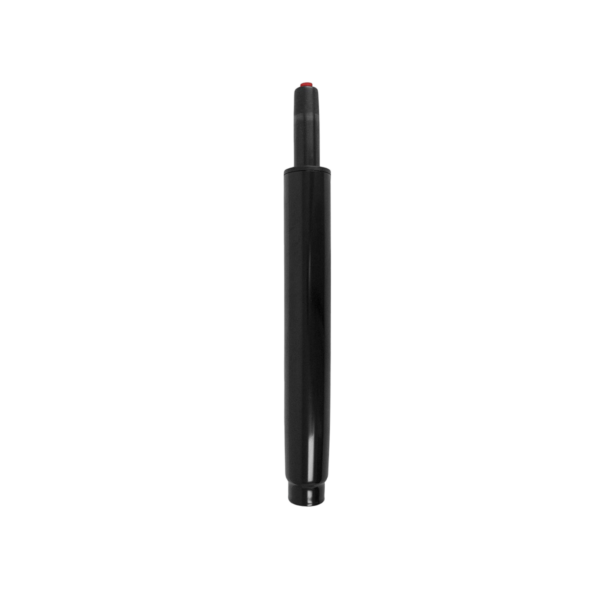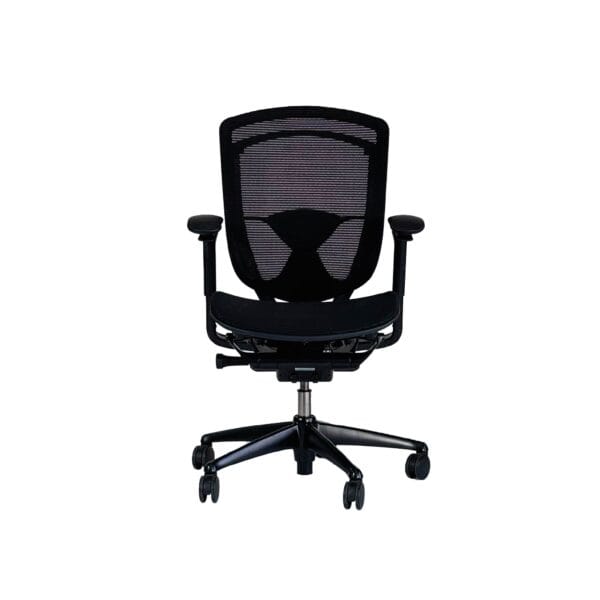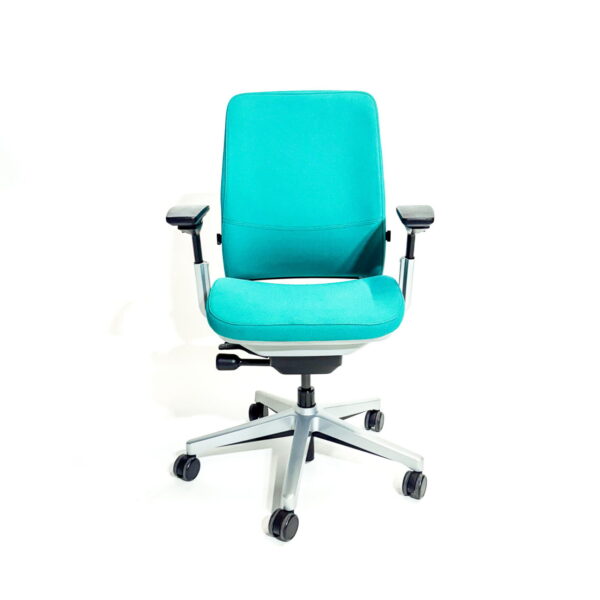When buying an office chair, you may have one logical question: How long do office chairs last? Given the range of hours spent averaging in the chair and the satisfaction, comfort, and functionality provided by the chair, much thought is warranted in armchair investment. What is the average life of office chairs, and what are the factors that affect their durability? These questions can assist you in making an intelligent decision and avoiding future replacement costs while also looking after your health and productivity.
In this guide, we will explain the relevant factors determining the longevity of office chairs in more detail, primarily focusing on the quality of accessed materials and maintenance practices. Additionally, we’ll cover the signs that it may be time for a replacement, even if your chair still “looks” good.
The Average Lifespan of Office Chairs
So, how long does an office chair last? The general average life of office chairs is estimated in the range somewhere between 5 and 10 years. So, this is an average type of range; many components can either diminish or lengthen the period. Quality, materials, usage, frequency of use, and overall care about office chairs would determine if this standard life expectancy should be appreciated or if the chair may last for up to 15 years.
Some high-end office chairs from established brands claim to last longer, as long as they receive proper care. The materials and padding are usually geared towards durability so many years down the line of usage, the chairs still manage to remain more or less comfortable. These cannot be compared with cheap chairs, which wear out much quicker under usage.
Key Factors That Determine How Long Office Chairs Last
Several important factors can impact the longevity of your office chair:
- Material Quality
The material used to make the chair is important. A good chair has a metal or hardwood frame with good-quality upholstery. Many other chairs have plastic frames with cheaper quality materials and naturally wear out quickly. For example, leather chairs can last a long time and even get more beautiful over time if they are cared for, while mesh-backed chairs can wear out quickly after constant use.
Frequency of Use
How long should an office chair last is also determined by the amount of use the chair is made every day. A chair that works 8 hours a day for work needs to be replaced more often than a chair used in a home office or as an extra chair. If a chair is used very strenuously every day, it would not be a good idea to buy chairs with normal endurance because they will break down quickly and money will be wasted.
- Ergonomic Adjustments and Features
Chairs that have multiple ergonomic features, such as adjustable lumbar support, seat depth, tilt, and armrests, are more likely to have durability. Such modifications enable better weight distribution on the chair and reduce the stress on any part of the chair. Most of the time, such chairs wear out relatively faster than fixed models that do not have any flexibility.
- Maintenance and Cleaning
The durability of an office chair depends a lot on proper care and regular maintenance. Dry cleaning or wiping the upholstery, tightening screws, and oiling the joints are largely preventive activities and can prevent damage. If left unattended, dirt and other grime can block mechanisms and rot the fabric, threatening the entire life of the chair.
- User Weight and Build
This is most common when employees are overweight. All chairs have a weight limit; using a chair that weighs more than you should will increase wear and tear. Heavy-duty chairs are designed for greater tolerance and intense use and such chairs last longer. To increase durability, one should always choose a chair size that matches the user’s body size and weight.
Types of Office Chairs and Their Expected Lifespans
Different types of office chairs come with different expected lifespans based on their design, materials, and construction quality:
- Ergonomic Chairs
Ergonomic office chairs are specifically designed for prolonged sitting with features to support posture and reduce strain. If properly cared for, high-end ergonomic chairs can last up to 10 to 15 years, provided the structure is sturdy, the fabric is of good quality and the padding is of the best quality.
- Mesh Office Chairs
Mesh-back chairs are known for their lightweight and breathable properties but may not last as long as other types, especially when the mesh is loose or torn. In most cases, mesh chairs have an average life span of 5-10 years, depending on the quality, with better-quality options running on the higher end of that range.
- Leather Office Chairs
Leather chairs can last a long time if properly cared for, as leather is a material that can withstand daily use. Over time it can also develop a rich look over the years. Genuine leather chairs inlaid in metal or hardwood can last at least 10 years and even longer with proper maintenance. Faux leather options, on the other hand, can wear out in about 5 to 7 years.
- Executive Chairs
Executive chairs are crafted from high-quality materials to enhance durability. The overall environment in which they are placed makes executive chairs more aesthetically pleasing and therefore includes padded upholstered seating as well as sturdy frames that can endure the stress of long-term use for an average of 10 years or more when well maintained, making the cost factor a worthwhile consideration.
Signs It’s Time to Replace Your Office Chair
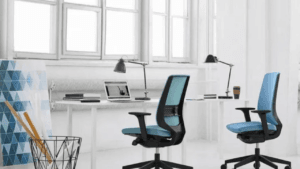
Regardless of how long office chairs last on average, every chair will eventually reach the end of its useful life. Here are common signs that it might be time for a replacement:
- Loss of Comfort
If you’re experiencing discomfort that didn’t exist when the chair was new, such as a sore back, neck, or legs, the cushioning and ergonomic support may have degraded. A lack of padding can lead to discomfort and poor posture, which can impact your health in the long term.
- Worn or Damaged Upholstery
Visible wear on the upholstery, like cracks, tears, or sagging, indicates that the chair is breaking down. For mesh chairs, loose or frayed mesh can cause discomfort and lead to further structural issues.
- Malfunctioning Adjustments
Ergonomic adjustments should work smoothly. If the armrests, tilt, or height adjustments are stuck or unresponsive, the chair is no longer functioning as intended and may compromise your sitting posture and comfort.
- Noise and Squeaking
Office chairs shouldn’t squeak or creak excessively when you move. These noises can signal weakened joints or loose components, which may worsen over time. This is often a sign that the internal mechanisms or the frame itself have deteriorated.
- Increased Back or Neck Pain
One of the biggest indicators that it’s time for a new chair is if you start to feel pain or discomfort which improves when you switch to a different chair. Persistent discomfort, especially in the back or neck, can be a sign that the chair no longer offers the support you need.
Tips to Extend the Life of Your Office Chair
Following some simple maintenance and usage tips can help you maximize your chair’s lifespan:
- Regularly Clean the Upholstery
Vacuum fabric upholstery as it can help get rid of dust dirt and hair that can be highly damaging to the material. If you have leather chairs, leather moisturizer should be applied periodically every six months so that the leather does not harden and develop cracks.
- Tighten Screws and Bolts
From the day you buy your chair, the screws and bolts that hold it together tighten the entire structure of the chair, but over time such screws and bolts can become loose, which can lead to loosening as well as movement. Make sure to check and tighten them from time to time.
- Lubricate Moving Parts
Use lubricants on the parts that move in the tilt systems and the parts that control the height adjustment of the chair.
- Avoid Sitting in One Position
Standing up every so often helps take pressure off one part of the chair and allows the user to extend the overall lifespan of the chair. Turn the chair frequently to the other side which helps to reduce pressure on the contact points between the cushion and the frame.
- Observe Weight Capacity Limits
Observing the weight capacity limit Reaching the chair’s limit can reduce the lifespan of the chair. Match the user’s body weight to the appropriate chairs and invest in heavier chairs when necessary.
Conclusion: How Long Should an Office Chair Last?
Ultimately, how long an office chair lasts depends on the quality of the chair, how often you sit on it, and also the level of maintenance given to the chair, for which office chairs can last about a decade between 7 and 15 years. If economical chairs are used, it is more likely that such chairs will wear out sooner than expected. When you decide to buy your new office chair, make sure that you match your needs with the quality of the chair that will help you achieve enjoyable and comfortable working years
If you’re starting to notice discomfort or wear in your chair, it might be time to consider a replacement that provides the support your body needs for the long hours spent working.


